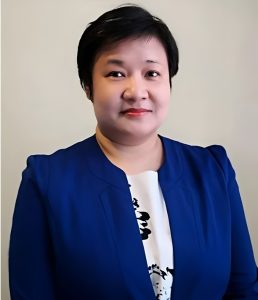Ir. Prof. Dr Leong Wai Yie, a Senior Professor in the Faculty of Engineering and Quantity Surveying at INTI International University and an expert in technology and healthcare engineering, has unveiled the profound impact of 5G technology on the healthcare industry. In her study titled “Engineer 5G to Transform Healthcare Industry,” Professor Leong sheds light on the groundbreaking shift initiated by 5G technology in the telecommunications landscape, promising unparalleled advancements in connectivity and catalysing transformations across various sectors, including healthcare.

Ir. Prof. Dr Leong Wai Yie, a Senior Professor in the Faculty of Engineering and Quantity Surveying at INTI International University, said rapid response is essential in emergencies, and 5G technology plays a pivotal role by facilitating faster communication.
The fifth-generation standard, known as 5G, has swiftly gained momentum in the telecommunications arena. Projections indicate that by 2025, the global count of 5G network users will exceed 1.7 billion, underscoring this transformative technology’s rapid adoption and worldwide reach.
Amid the challenges posed by the COVID-19 pandemic, instances emerged where the deployment of 5G networks significantly enhanced healthcare accessibility in remote and underserved regions. Professor Dr Leong emphasised, “In critical situations, such as emergencies, 5G has played a pivotal role in improving communication and coordination among emergency responders, resulting in quicker response times and more efficient resource deployment.”
The observable enhancements in telemedicine and remote patient monitoring owe their success to implementing 5G technology. The high data transfer speeds of 5G networks revolutionise medical imaging by enabling the rapid and efficient transmission of large files from MRIs and CT scans. This, in turn, facilitates remote diagnostics and collaboration among healthcare professionals located in disparate regions.
5G technology’s high bandwidth and low latency enable high-definition video conferencing, real-time transmission of health data for continuous remote monitoring of patients with chronic conditions, and seamless transmission of substantial volumes of data from wearable devices and sensors for real-time vital sign monitoring.
Professor Dr Leong stressed the critical role 5G plays in situations necessitating real-time data transfer. It facilitates faster communication between emergency services, leading to quicker ambulance dispatch and prompt decision-making across various medical settings, including intensive care units (ICUs) and surgical rooms.
The support for numerous connected devices underscores how 5G’s ability to handle many devices simultaneously has revolutionised healthcare practices. This proves particularly advantageous for the widespread adoption of IoT in healthcare, ensuring enhanced connectivity and actively empowering patients to participate in their care through connected devices and applications.
The immense potential of 5G to revolutionise global healthcare systems becomes evident. With its real-time data-handling capabilities, 5G can support a vast connected device ecosystem. It enables healthcare professionals to receive immediate updates on patients’ vital signs and health metrics for early detection of potential issues and proactive intervention, particularly in Remote Patient Monitoring scenarios.
Integrating 5G technology with emerging technologies like AI and IoT can enhance patient care experiences. Patients can engage in virtual visits with healthcare professionals. At the same time, AI-driven diagnostics and real-time data from IoT devices bolster the accuracy and speed of diagnoses, providing patients faster access to test results and expediting overall healthcare decision-making.
5G technology is a revolutionary force shaping healthcare’s future. As we move forward on this transformative journey, the convergence of technology and healthcare offers a promising future where accessibility, innovation, and global healthcare systems come together for the betterment of humanity.